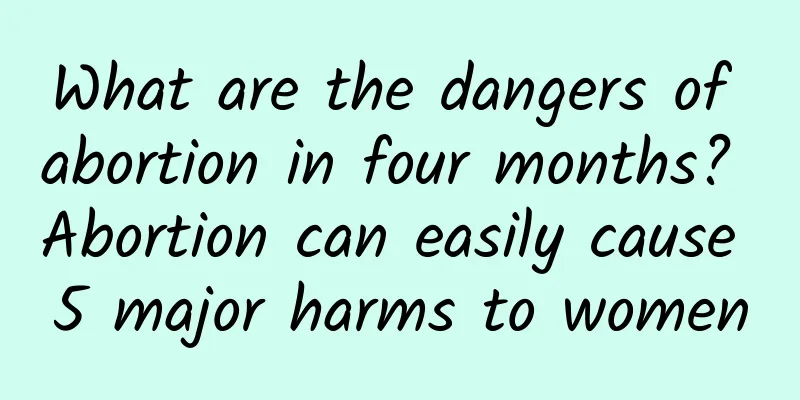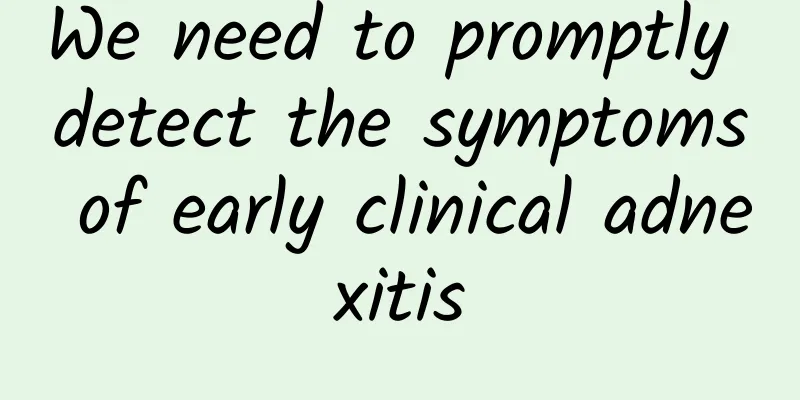What are the dangers of abortion in four months? Abortion can easily cause 5 major harms to women

|
Pregnancy is a very happy thing. For many families, it is the continuation of life. Although people's concepts are now more open than before, there are still some people who prefer boys to girls. When we are pregnant, we know that we are not pregnant with what we want, so we want to abort. When we are four months pregnant, we find that we are not ready to be a mother and don't want it. What are the dangers of abortion? Generally speaking, when a woman is pregnant for more than 3 months, she will have to undergo an induced abortion. Both induced abortion and artificial abortion are harmful to the human body. Induced abortion is more difficult, more dangerous, and more harmful than artificial abortion. So what are the hazards of induced abortion? Due to the long pregnancy and large fetus, various complications are prone to occur during and after induced abortion. The specific hazards of induced abortion are as follows: Hazards of induced abortion 1. Bleeding after induced abortion The second harm of induced labor is damage to the birth canal. The third harm of induced abortion is uterine rupture. The fourth harm of induced labor is amniotic fluid embolism. The fifth hazard of induced labor is infection. During the mid-term induced labor, the placenta has been formed, the fetus is larger, and the bones are hardened. The cervix needs to be fully dilated when it is delivered. Therefore, induced labor is equivalent to a birth. After a successful induced labor, it is usually necessary to stay in the hospital for observation for 3 days. The doctor will give necessary treatment according to the induced labor situation. If there is no abnormality, you can be discharged from the hospital after 3 days. Rest for at least one month after induced labor and avoid fatigue. Sexual life is prohibited within one month after induced labor, and attention should be paid to keeping clean. You should go to the hospital for a review one month later and take necessary contraceptive measures. The longer the month of pregnancy, the greater the damage to women and the greater the risk. You should cooperate closely with the doctor during the operation and don't be too nervous. Sexual life, sitz bath, vaginal washing and medication are prohibited within one month after the operation. Because at this time, the cervix is relaxed, the endometrium is shed, and the local defense ability is reduced, which is easy to cause retrograde infection, resulting in: pelvic inflammation such as endometritis and adnexitis, which can cause infertility in severe cases. From the above, we know that it is quite dangerous to have an abortion in the fourth month of pregnancy. Abortion itself is very harmful to our body. At the fourth month, the baby has already begun to take shape in the mother's belly, so if you want to have an abortion, you must think carefully. After all, the baby is a life, your own flesh and blood, and you cannot make an irreversible decision because of your own rashness. |
Recommend
Can I take Hongjin Xiaojie Capsules during menstruation?
Can I take Hongjin Xiaojie Capsules during menstr...
How to lose weight after becoming obese after the Chinese New Year? Online survey: 7 major exercises and 5 major slimming diets to burn fat and lose weight
During the New Year holidays, many people unknowi...
Is it normal to have an hcg value of 31 after 30 days of abortion?
If the HCG value is 31U/L 30 days after the abort...
Initial diagnosis of cervical precancerous lesions
What are the differential diagnosis methods for c...
Is two days of withdrawal bleeding considered menstruation?
Is two days of withdrawal bleeding considered men...
After spotting in late pregnancy, there is a dull pain in the lower abdomen like menstruation
After spotting in late pregnancy, there is a dull...
Why are elderly people more prone to vaginitis?
Vaginitis is a common disease among women and can...
What are the causes of vulvar leukoplakia?
What causes vulvar leukoplakia? Vulvar leukoplaki...
Experts explain the common symptoms of cervicitis
The cervix is an important part of the female r...
How to effectively prevent the occurrence of pelvic inflammatory disease?
How to prevent pelvic inflammatory disease? Pelvi...
What are the benefits of foot bathing for the uterus? Promote blood circulation
Persisting in foot soaking is very beneficial to ...
Analyze the early symptoms of cervicitis for you
Cervicitis is a major disease that many women are...
Knowing more about the symptoms of ovarian cysts can give patients more confidence
The ovaries are important reproductive organs of ...
Can uterine fibroids eat blood? What should people with anemia eat?
Uterine fibroids may cause excessive menstrual fl...
Eat starch for dinner to lose weight? Rely on 2 weight loss hormones
Want to lose weight, avoid starchy foods for dinn...









